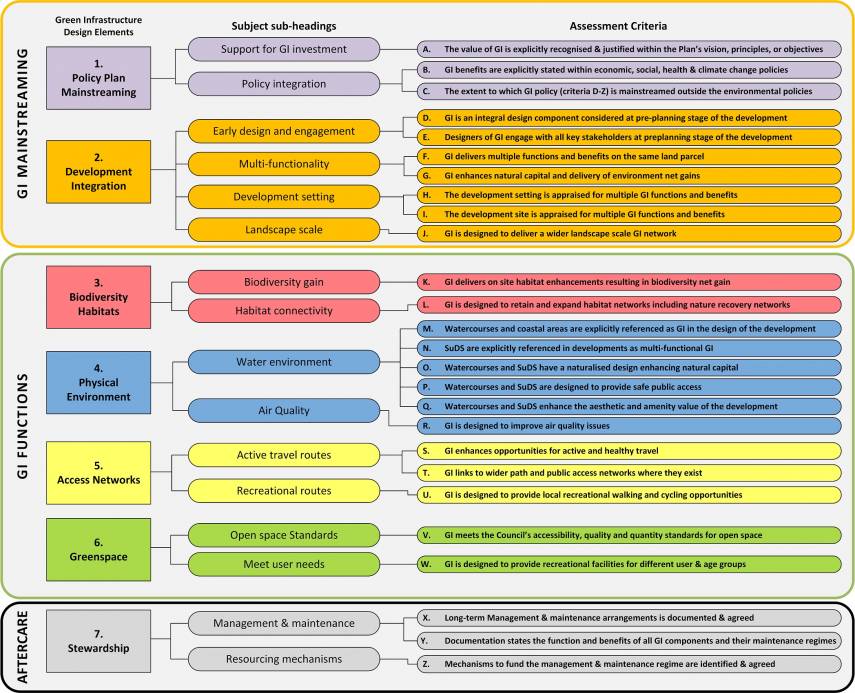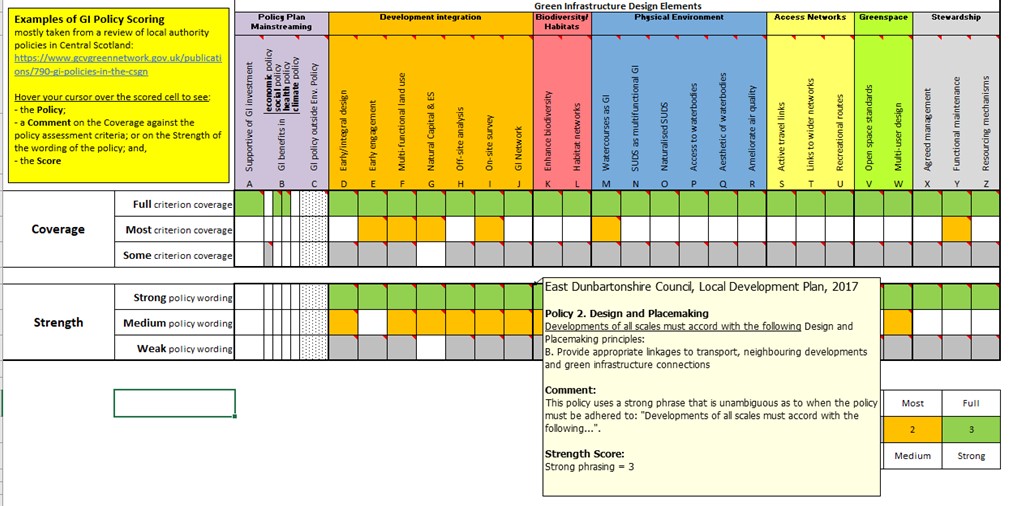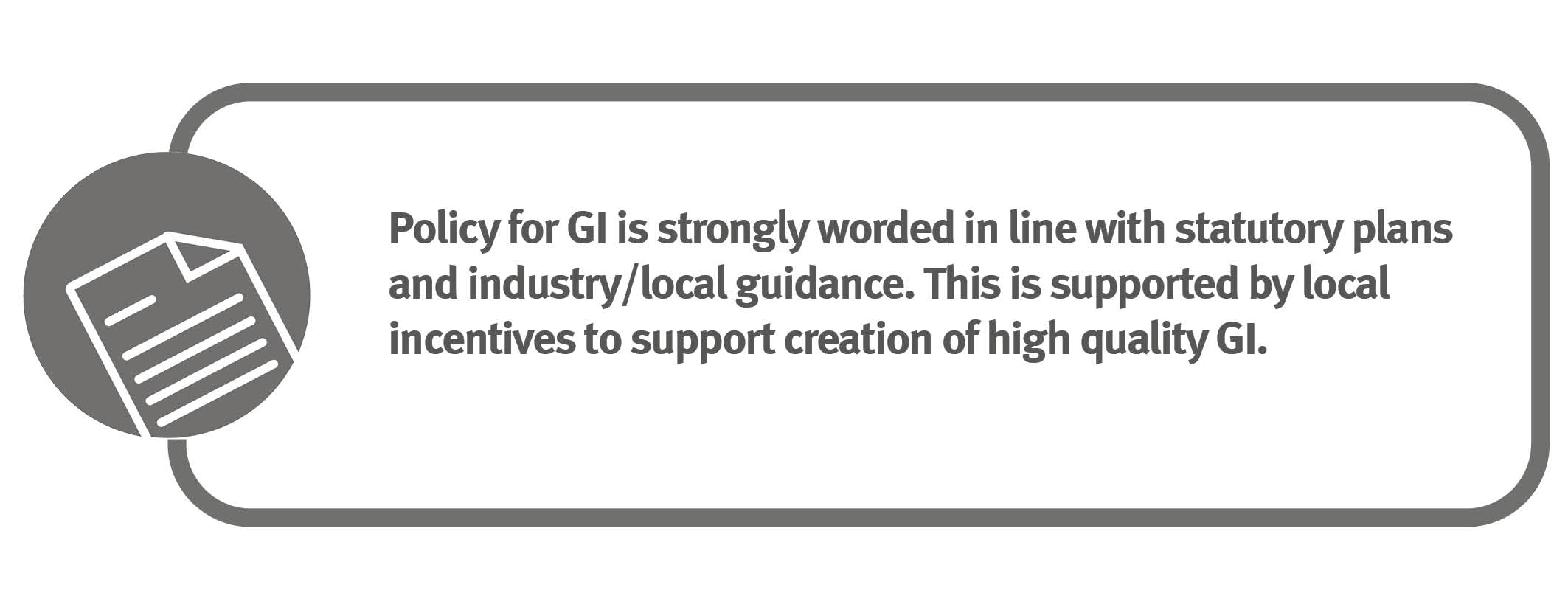Principle 8: Commitment to Delivery
Standard
Why does it matter?
Development proposals and policy wording need to make strongly worded commitments to the protection and provision of GI on site, recognising GI as a positive economic, social, and environmental asset, serving as critical infrastructure.
The Natural Capital Committee, an independent advisory committee to the UK Government, has stated that: “Building GI into long-term development plans will not only ensure its benefits from the outset, but will also avoid costly retrofitting in the future.
In terms of policy, wording should cover all of the standards identified here but research has shown that whilst coverage may be good the strength of policy wording (must, should, where appropriate, where possible) often falls into the weaker categories and is often therefore viewed as less of a priority.


Meeting the principle
The type and strength of wording used when referring to GI provision, protection, management, and maintenance is critical. GI commitments made using terms such as ‘should’ ‘consider’ or ‘might’ are considered weak as they can potentially be voided or trumped by commitments for the delivery of other infrastructure and/or services. Strongly worded GI commitments will be supported when design and provision is informed by effective engagement via participatory processes.
A GI audit (or equivalent) needs to be completed to outline and access the existing site GI. Where possible, existing GI is to be incorporated as part of the design with strongly worded commitments for this made. Where the removal of high value GI is unavoidable then suitable locations will need to be identified and replaced to equal or enhanced quality. Again, strongly worded commitments for the mitigation of GI loss are expected. Where possible, there should be no variation between what is proposed and what is physically delivered on site. GI must align with statutory plans, planning policy and local guidance.
Make the context of your plan, policy, project or programme clear at the outset. Development comments may carry less weight if there is not clear policy wording within guidance documents such as local plans. By not having strong policy wording within strategic documents GI can be overlooked due to other competing policy priorities.
Early Engagement can help strengthen the narrative and maximize the opportunities to secure the best outcomes through planning and design. It is helpful here to identify the key political hooks such as climate emergency, biodiversity net-gain and duty to corporate across the key criteria from the NPPF, which will help to align to priorities and aid discussions with stakeholders. For further information regarding early engagement, please see Principle 4: Early Engagement.
It is important for the GI designs in development proposals to be supported with the commitment to deliver on the ground. Site GI principles and standards should be embedded and referenced across application documents to ensure its multifunctionality and multiple benefits are not overlooked. This integration will clearly demonstrate the contributions of GI to natural capital, ecosystem services, biodiversity net-gain, climate change, flooding, health and wellbeing, sustainable transport and placemaking.
Page updated: 4/04/2023
